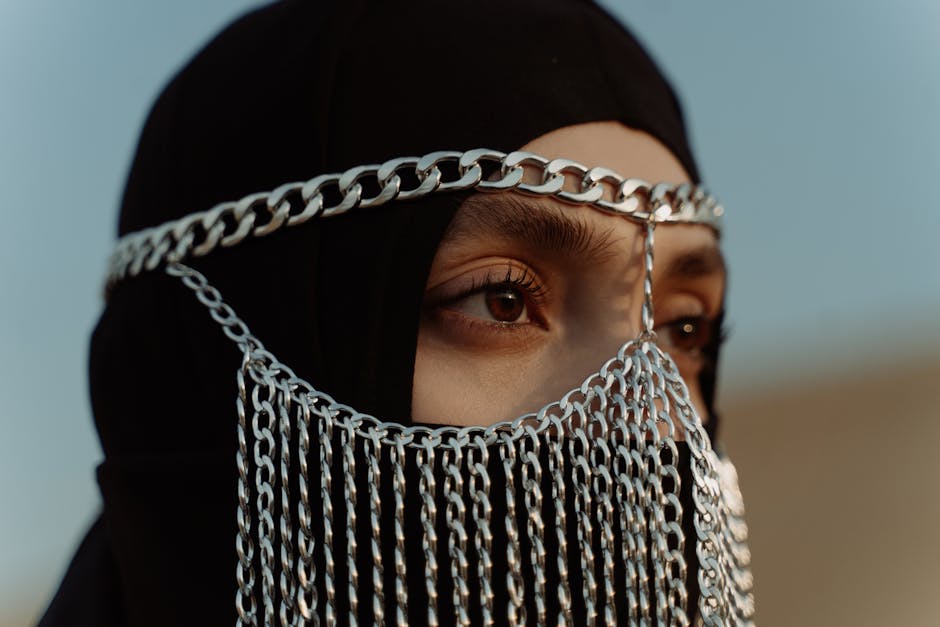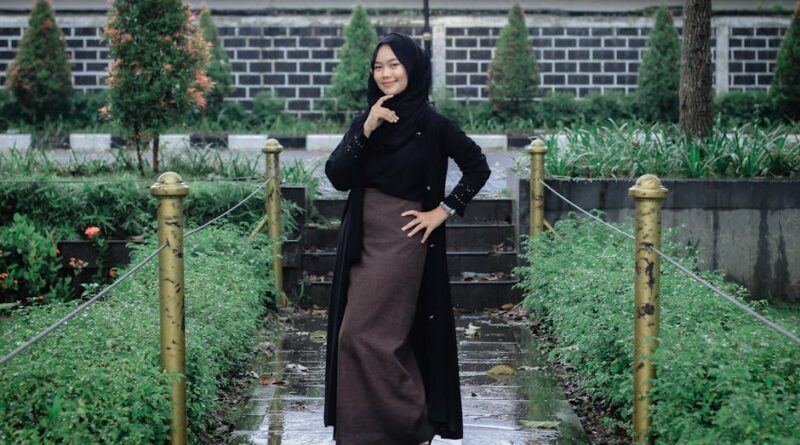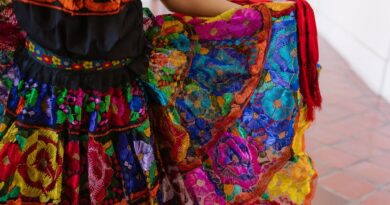Cultural Identity Through Fashion: Exploring the Tapestry of Diversity
In a world where globalization and cultural exchange are on the rise, fashion has emerged as a powerful tool for expressing and preserving cultural identity. From traditional garments to contemporary trends, clothing reflects the rich tapestry of diversity that defines our global society. ‘Cultural identity through fashion‘ is not just about what we wear; it is a statement of who we are, where we come from, and what we value. Let’s delve into the intricate relationship between culture and fashion, exploring how clothing serves as a medium for self-expression, celebration, and solidarity.
The Historical Roots of Cultural Identity in Fashion

By Israyosoy S. via Pexels
Throughout history, clothing has played a pivotal role in shaping cultural identity. From ancient civilizations to modern societies, fashion has been a mirror reflecting the values, beliefs, and traditions of different cultures. In ancient Egypt, for example, clothing was not just a form of protection from the elements but also a symbol of social status and religious beliefs. The elaborate garments worn by pharaohs and priests were intricately designed to convey power, authority, and divine connection.
Similarly, in medieval Europe, clothing was a means of distinguishing between social classes and professions. The sumptuary laws of the time regulated what people could wear based on their rank in society, reinforcing the idea that clothing was a visual marker of one’s place in the social hierarchy.
As societies evolved and cultures interacted through trade, conquest, and migration, fashion became a fusion of different influences, creating unique styles that reflected the diversity of the world. The Silk Road, for instance, facilitated the exchange of goods and ideas between East and West, leading to the emergence of new textiles, patterns, and designs that blended the artistic traditions of multiple cultures.
Today, the legacy of this historical evolution is evident in the way we dress. Whether it’s a kimono from Japan, a saree from India, or a kilt from Scotland, traditional garments continue to be celebrated and worn with pride, connecting people to their cultural heritage and identity.
The Role of Fashion in Cultural Expression

By cottonbro studio via Pexels
One of the most powerful aspects of fashion is its ability to serve as a form of cultural expression. Through clothing, individuals can communicate their identity, beliefs, and affiliations to the world. Each garment, accessory, or style choice tells a story, reflecting personal experiences, values, and aspirations.
For many people, wearing traditional attire is a way to honor their roots and pay homage to their ancestors. In Native American communities, for example, regalia plays a central role in cultural ceremonies and gatherings, symbolizing tribal pride, heritage, and spiritual connection. The intricate beadwork, feathers, and patterns found in traditional Native American clothing are not just decorative elements but symbols of identity and belonging.
Similarly, in African cultures, clothing is a means of expressing tribal affiliation, social status, and personal style. The vibrant colors, bold patterns, and intricate designs of African textiles represent a rich tapestry of traditions, stories, and symbols that have been passed down through generations. From the kente cloth of Ghana to the mud cloth of Mali, African fashion is a celebration of diversity and creativity.
Beyond traditional attire, contemporary fashion also plays a crucial role in cultural expression. Designers around the world draw inspiration from diverse cultures, blending traditional motifs with modern aesthetics to create unique and innovative styles that reflect the globalized nature of fashion. From the runways of Paris to the streets of Tokyo, cultural influences can be seen in the way people dress, accessorize, and present themselves.
Cultural Appropriation vs. Appreciation in Fashion

By Pixabay via Pexels
While fashion has the power to celebrate cultural diversity, it can also be a source of controversy when it comes to issues of cultural appropriation. Cultural appropriation refers to the adoption of elements from a marginalized culture by members of a dominant culture without proper acknowledgment, respect, or understanding of the cultural significance.
In recent years, there have been numerous instances of cultural appropriation in the fashion industry, where designers have taken inspiration from traditional garments, symbols, or practices without giving credit to the original creators or communities. This has sparked debates about who has the right to wear certain styles, whether certain designs are sacred or ceremonial, and how cultural heritage should be respected and preserved.
On the other hand, cultural appreciation in fashion involves recognizing and honoring the cultural origins of a particular style, symbol, or technique. It involves engaging with the community, learning about the history and significance of the cultural elements being used, and giving credit where credit is due. When done respectfully and authentically, cultural appreciation can lead to meaningful collaborations, cross-cultural exchanges, and greater understanding between different communities.
As consumers, it is important to be mindful of the cultural significance of the clothing we wear and to support designers and brands that promote cultural diversity, inclusivity, and sustainability. By choosing to buy from ethical and culturally sensitive fashion labels, we can help create a more equitable and respectful fashion industry that celebrates the beauty and richness of global cultures.
The Influence of Globalization on Cultural Identity in Fashion

By cottonbro studio via Pexels
In today’s interconnected world, the boundaries between cultures are becoming increasingly blurred, thanks to the forces of globalization. As people travel, migrate, and communicate across borders, cultural exchange and fusion have become the norm, shaping the way we perceive and engage with fashion.
Globalization has led to the rise of fast fashion, a phenomenon characterized by rapid production cycles, low-cost garments, and trend-driven consumer behavior. While fast fashion has made clothing more accessible and affordable to a wider audience, it has also raised concerns about its environmental impact, labor practices, and cultural implications.
On the one hand, fast fashion has enabled the dissemination of trends and styles from around the world, allowing people to experiment with different looks and express themselves in new ways. However, this rapid turnover of clothing has also led to issues of waste, exploitation, and cultural homogenization, as traditional crafts and techniques are often appropriated and mass-produced without regard for their cultural significance.
At the same time, globalization has opened up new opportunities for cultural exchange and collaboration in the fashion industry. Designers, models, and influencers from diverse backgrounds are gaining visibility and recognition, challenging traditional notions of beauty, style, and representation. Through social media, fashion shows, and online platforms, voices that were once marginalized are now being heard, celebrated, and amplified, leading to a more inclusive and diverse fashion landscape.
As we navigate the complexities of a globalized world, it is essential to embrace cultural diversity, promote ethical practices, and engage in meaningful dialogues about the impact of our fashion choices on the environment, society, and culture. By supporting sustainable and socially responsible fashion brands, advocating for fair labor practices, and celebrating the cultural richness of our clothing, we can contribute to a more equitable and inclusive fashion industry that values diversity and creativity.
Expert Opinions on Cultural Identity Through Fashion
To gain further insights into the intersection of cultural identity and fashion, we reached out to several experts in the field for their perspectives on the topic. According to Dr. Maria Mackenzie, a cultural anthropologist specializing in fashion studies, “Clothing is a powerful means of expressing cultural identity, as it embodies the values, beliefs, and traditions of a particular community. By wearing traditional attire or incorporating cultural elements into their wardrobe, individuals can assert their identity and connect with their heritage in a meaningful way.”
Dr. Jamal Patel, a fashion historian and lecturer, adds, “Fashion has the unique ability to transcend language, geography, and time, allowing people to communicate and connect with each other on a deeper level. When we appreciate and respect the cultural origins of the clothing we wear, we not only honor the traditions of the past but also pave the way for a more inclusive and diverse future.”
These expert opinions highlight the importance of cultural identity in fashion and underscore the need for greater awareness, respect, and appreciation of the diverse cultures that shape our sartorial choices.
Conclusion: Embracing Diversity in Fashion
In conclusion, ‘Cultural identity through fashion’ is a multifaceted and evolving concept that reflects the rich tapestry of diversity that defines our global society. From traditional garments to contemporary trends, clothing serves as a powerful medium for expressing, celebrating, and preserving cultural identity. By embracing the cultural influences that shape our fashion choices, we can create a more inclusive, equitable, and sustainable fashion industry that values diversity, creativity, and authenticity.
As we navigate the complexities of a globalized world, let us remember that every garment we wear tells a story, reflects a tradition, and connects us to a community. By honoring the cultural origins of our clothing, supporting ethical and sustainable fashion practices, and promoting inclusivity and diversity in the industry, we can contribute to a more vibrant, interconnected, and culturally rich fashion landscape for generations to come.
To wrap things up, let us celebrate the beauty of cultural diversity in fashion, embrace the uniqueness of our individual identities, and strive to create a world where every garment we wear is a testament to the richness and resilience of human creativity.




